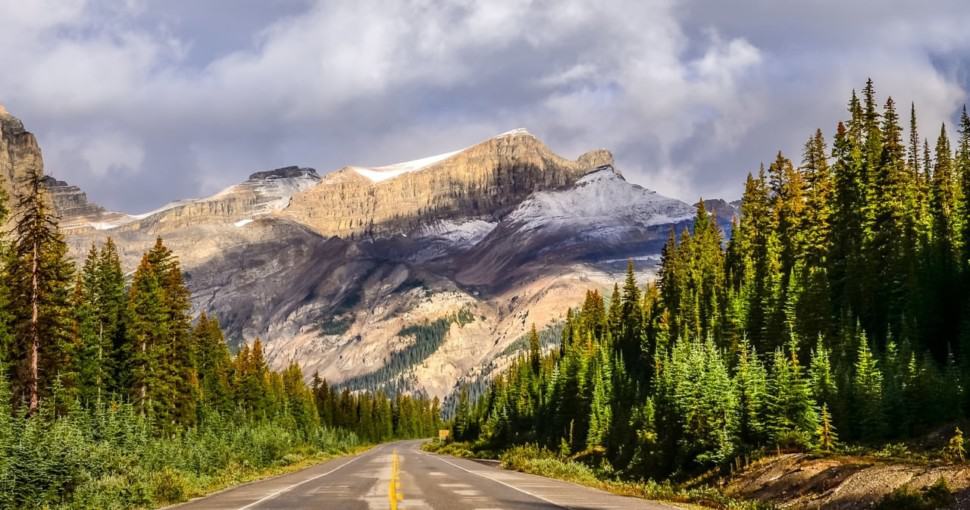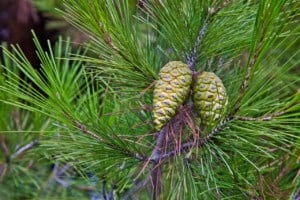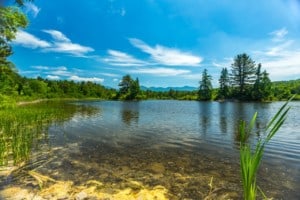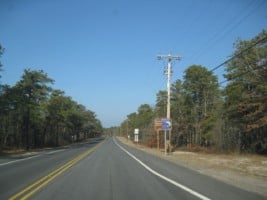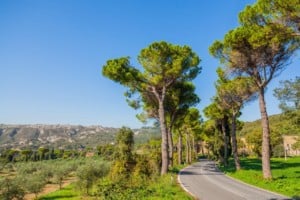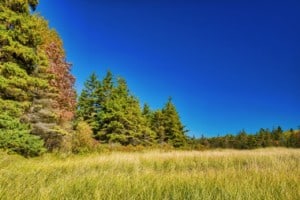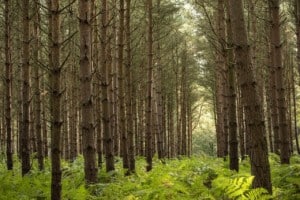Do you love collecting pine cones and smelling that fresh, evergreen smell of pine on your early morning jog? Well, you’re in luck! Canada is home to numerous species of pine trees, and they thrive quite well under Canadian weather conditions. Let’s learn about the different species of pine trees you will come across in different areas.
Contents
- 1. Eastern white pine (Pinus strobus)
- 2. Limber pine (Pinus flexilis)
- 3. Whitebark pine (Pinus albicaulis)
- 4. Ponderosa pine (Pinus ponderosa)
- 5. Lodgepole pine (Pinus contorta)
- 6. Jack pine (Pinus banksiana)
- 7. Red pine (Pinus resinosa)
- 8. Pitch pine (Pinus rigida)
- 9. Black pine (Pinus nigra)
- 10. Scots pine (Pinus sylvestris)
- 11. Virginia pine (Pinus virginiana)
- 12. Pond pine (Pinus serotina)
Canada’s territory is quite vast, spread out over 10 million square kilometers. This land is home to almost one-third of the world’s boreal forests and is extremely rich in pine trees. Almost half of the Canadian landscape is still deeply forested, with strict jurisdictions in place to regulate harvest rates and ensure the sustainability of the ecosystem and the natural resources it contains.
The forestation is supported by the Canadian weather patterns that optimize pine growth and plantation. The northern parts of the country have very cold winters paired with short, cool summers.
As you move to the central-southern regions of Canada, you will experience a typical continental climate, with hot summers that receive little to no rain and extremely cold winters. Aside from British Columbia, all of Canada has continuous snow cover, which creates a stunning look as the fluffy white precipitation settles over the pine forests.
Being so rich in forestation, Canada has become one of the world’s biggest timber exporters. It has a magnificent variety of pine species, ranging from the most commonly found Jack pine to the Eastern white pine, which is native to southern Ontario. Today, we’ll learn all about the different types of pine trees in Canada and how to spot the differences between them.
1. Eastern white pine (Pinus strobus)
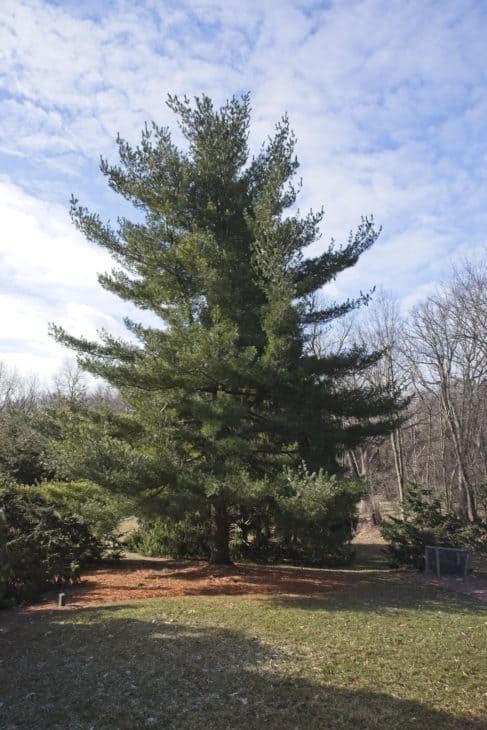
Standing over 70 meters tall, the Eastern white pine is a true beauty to behold. It is a hardy and a rather valuable tree that has clustered, soft blue-green needles. The Eastern white pine grows best in moist, well-drained, and acidic soils and increases up to 60 cm per annum. It is commonly used as Christmas trees worldwide since it grows in that distinct pyramidal shape.
2. Limber pine (Pinus flexilis)
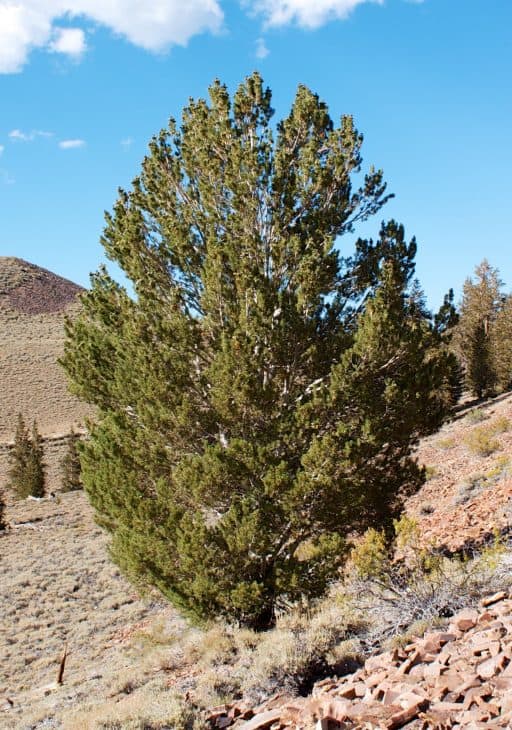
With a light-gray, smooth bark that becomes dark brown with age and develops scaly ridges, the Limber pine is another species of pine commonly found in Canada. It has large, woody cones with ‘windless’ seeds that distinguish it from other types of pine trees. These pine trees reach over 15 meters in height and are slow-growing, long-lived plants as some can take hundreds of years to reach maturity.
3. Whitebark pine (Pinus albicaulis)
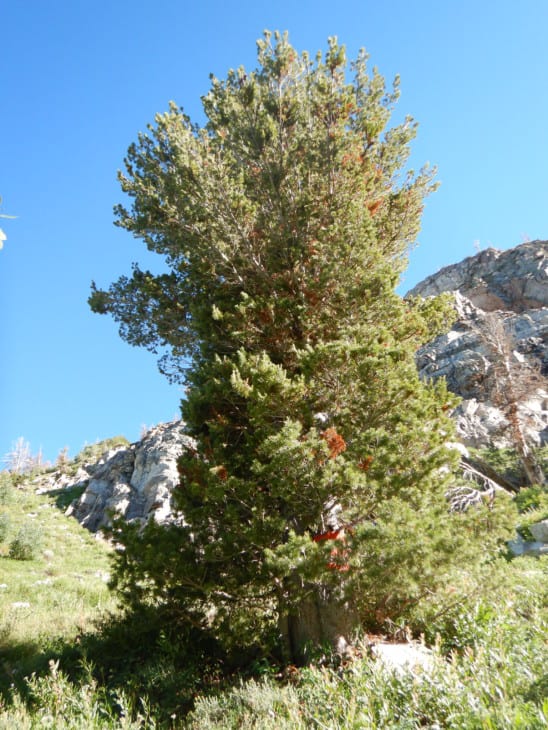
The Whitebark pine tree is an evergreen, monoecious conifer that stands 20 meters tall and is found single-trunked. These pine trees have a conical crown, and the bark is light gray in color. You will also notice twigs and flexible rope-like branches extending from the main tree trunk. The Whitebark pine tree has needles in bundles of 5 and bluish-green in color.
4. Ponderosa pine (Pinus ponderosa)
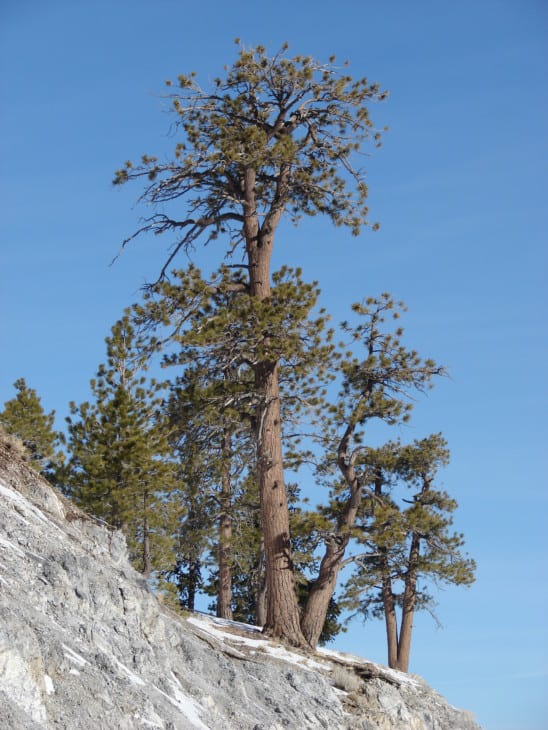
Also known as the Yellow pine, the Ponderosa pine is a large species of pine tree that smells like vanilla or butterscotch. Sounds delightful, doesn’t it? These trees are easily recognized by their straight, thick trunks that are covered in scales and are colored bright orange. These perennial conifers have needles in groups of 2 or 3, and they live up to 400 years.
5. Lodgepole pine (Pinus contorta)
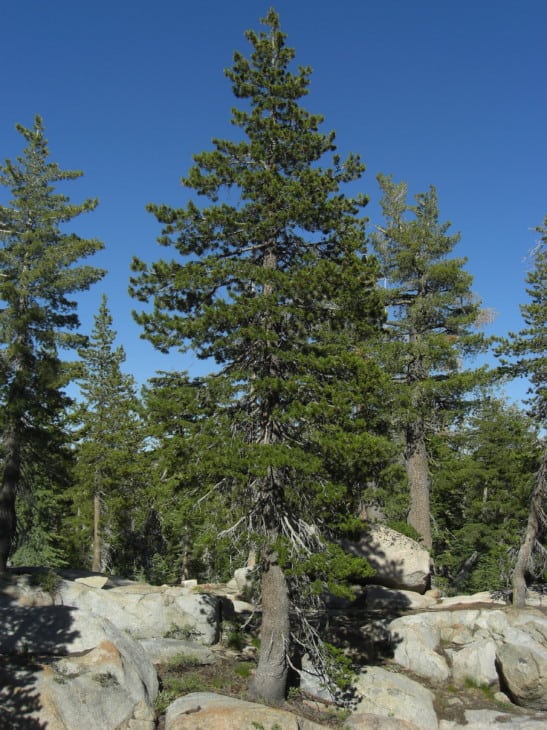
You may have heard of the Lodgepole pine as the shore pine or even the twisted pine. The latter refers to this pine tree’s young shoots that are twisted and contorted into unusual shapes. The relatively thin bark and the shallow rooting system make this tree quite susceptible to fires. Lodgepole pine trees are a great resource for lumber, paneling, and plywood, making them an essential part of the Canadian timber industry.
6. Jack pine (Pinus banksiana)
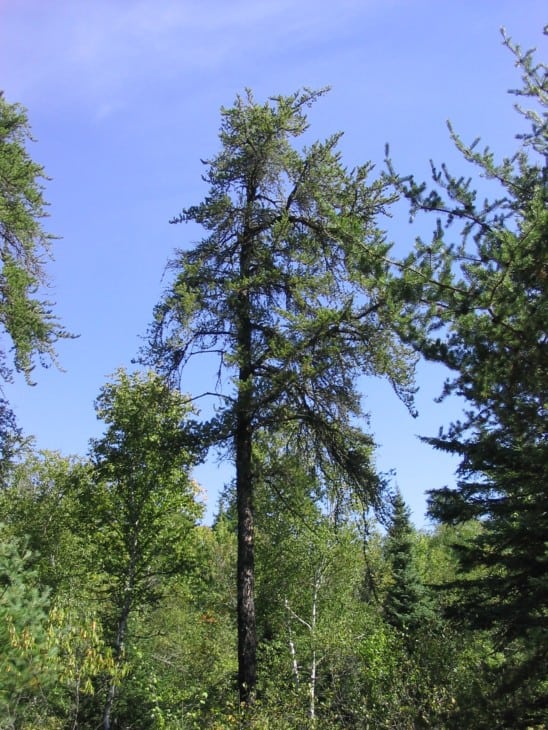
The Jack pine tree is an eastern North American species of evergreen conifers that are native to most of the Canadian land. It grows medium to large-sized, with heights ranging from 17 to 20 meters high. These trees have a small crown, and their needles are found in pairs of two.
7. Red pine (Pinus resinosa)
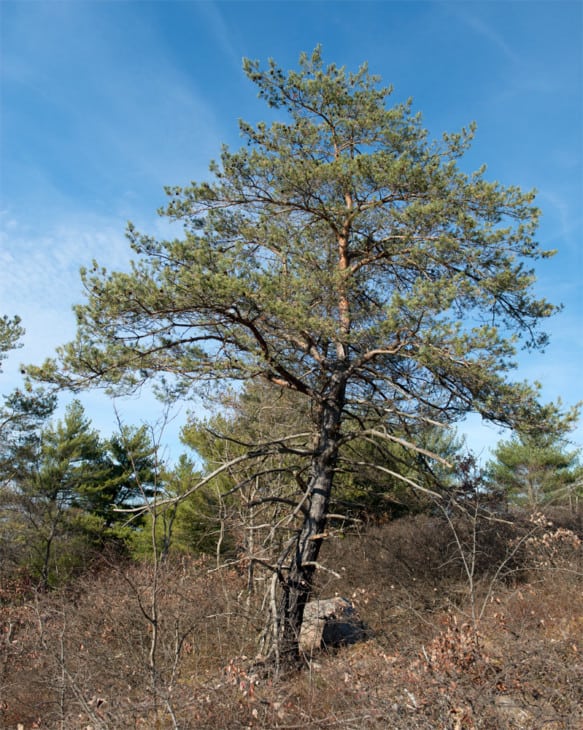
Red pine trees are evergreen conifers known for their tall, straight trunks. These trees can grow in a variety of different habitats and reach over 35 meters in height. They have a conical crown that acquires a dome-like shape over the years. The red pine is monoecious and fast-growing for the first 60 to 70 years of its life.
8. Pitch pine (Pinus rigida)
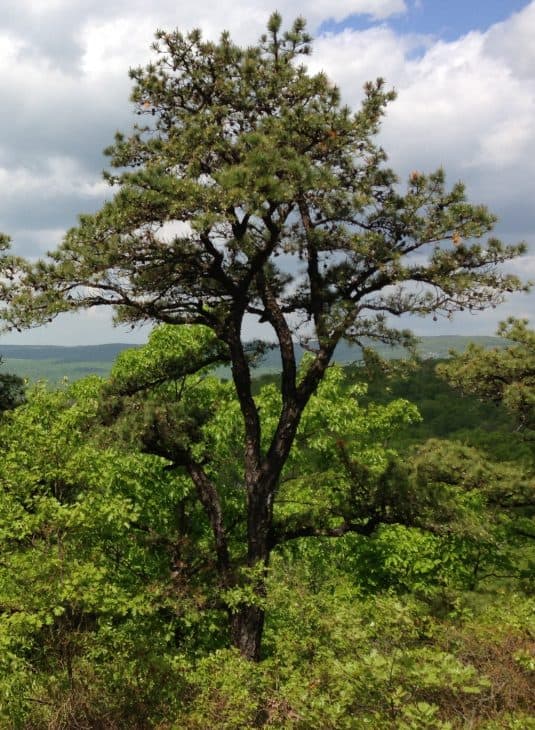
The Pitch pine is a medium sized pine tree found in eastern North America. These pine trees don’t grow over 25 meters in height and often have irregular branching that looked twisted or gnarled. Even the best-planted Pitch pine grows slowly, taking over 30 years to reach maturity. These trees have yellow-green needles that are arranged in clusters of three.
9. Black pine (Pinus nigra)
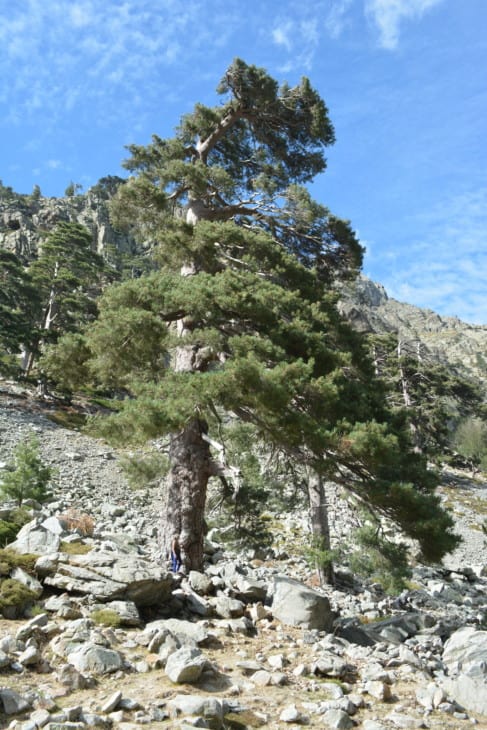
Black pine trees are evergreen gymnosperms that can reach heights of over 50 meters. These triangular trees become flat-topped with age. Their bark has a rough texture and is brown-black in color. It is a two-needle variety of pine species and grows quite vigorously in 25 localities of Southern Ontario.
10. Scots pine (Pinus sylvestris)
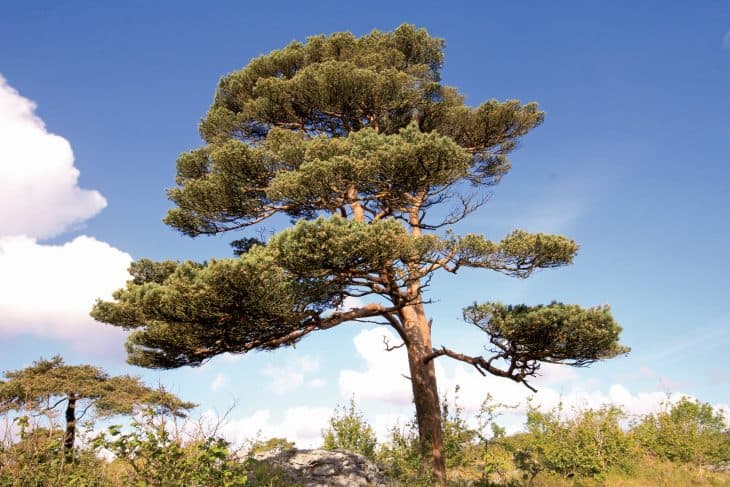
The Scots pine is a fast-growing, medium-sized conifer that is conical or columnar in shape. It has a distinctive orange-brown brand that appears flaky. The needles are blue-green colored and twisted. It is commonly found in poor, sandy soils and rocky outcrops. These trees can grow up to 700 years and reach heights of 35 meters.
11. Virginia pine (Pinus virginiana)
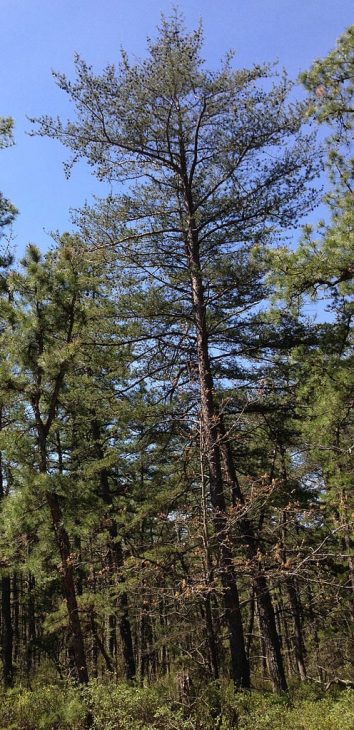
Under optimal weather and soil condition, the Virginia pine grows up to 23 meters tall with an annual growth rate of 6m3/hectare. It has sharp-tipped needles of yellow color, and the plant appears as a scrubby evergreen conifer. These trees grow best under full sun and sandy loam, adapting to most soil conditions besides alkaline.
12. Pond pine (Pinus serotina)
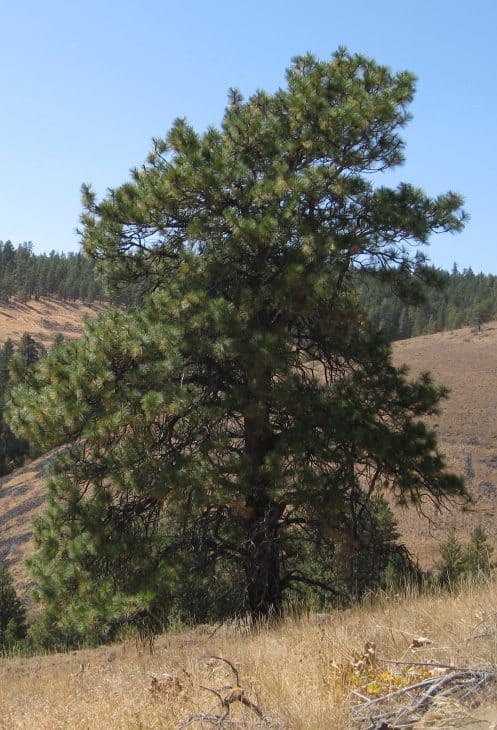
Also known as marsh pine and bay pine, the Pond pine species grows to medium heights of 25 meters. These trees are distinguished by their broad and long female cones that have weak prickles. The Pond pone sprouts needles directly from the trunk and is usually found in soils with a high water table.

